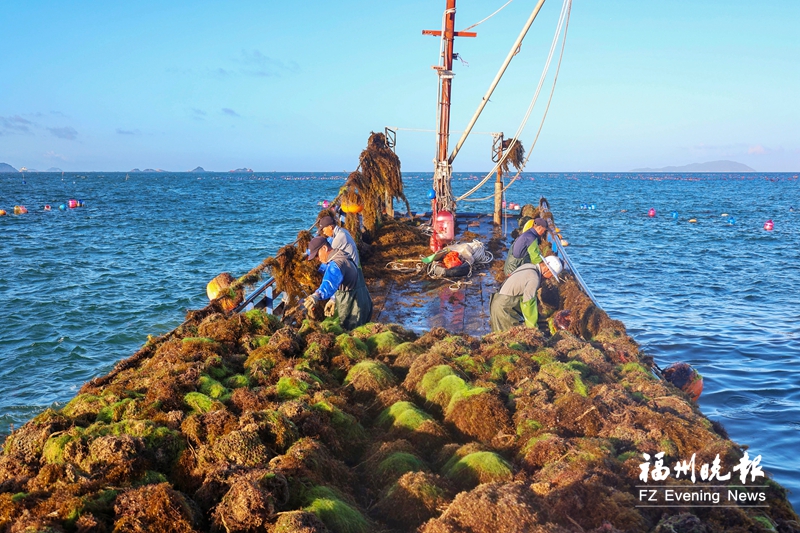Lianjiang Triploid Oysters Hit the Market Known as “the Fair-skinned, Rich, and Beautiful” of the Oyster World
Currently, Lianjiang’s 25,000 mu of triploid oysters are entering their peak season, offering locals the chance to taste this “milk of the sea.” On July 3, CCTV-17 (Agriculture and Rural Affairs Channel) aired a feature on this.

Fishermen were busy harvesting oysters.
It is reported that oysters, also known as “raw oysters,” are large, juicy, and rich in nutrients like protein and calcium. For this reason, they are often called the “milk of the sea.”
In recent days, fishermen in Dinghai Village, Xiaocheng Town, have been busy harvesting oysters. They head out to Dinghai Bay, skillfully weaving their boats between the colorful aquaculture buoys, hauling up heavy lines of cultivation ropes. With a splash of water, the oyster cages rise to the surface, and soon the boats are piled high with fresh triploid oysters.
Triploid oysters, bred using modern biotechnology, cannot reproduce. It’s like they focus solely on growing bigger. With their tender and more delicate meat and enhanced flavor, they are often referred to as “the fair-skinned, rich, and beautiful” of the oyster world.
It is reported that the currents in Dinghai Bay are gentle, the water temperature is perfect, and the area is rich in microorganisms and food sources, all of which create an ideal environment for oyster cultivation. As a result, the oysters here are not only large but also have tender meat and a delicious, fresh flavor.
“The oysters here are plump and of top quality, making them in high demand in the market,” said Tan Xinghuo, a buyer from Xiapu County, Ningde City. He told the reporter that he purchases around 50,000 kilograms of oysters daily in Dinghai Village, which he then ships to seafood markets nationwide.
According to statistics from the Lianjiang Department of Ocean and Fisheries, triploid oysters farmed by local fishermen are mainly found in Dinghai Bay, Luoyuan Bay, Songlu Bay, and the surrounding waters of Huangqi Peninsula, covering an area of 25,000 mu. (Fuzhou Evening News Reporter: Zheng Ruiyang; Correspondents: Lian Rongmei, Wu Qifa; Text/Photo)